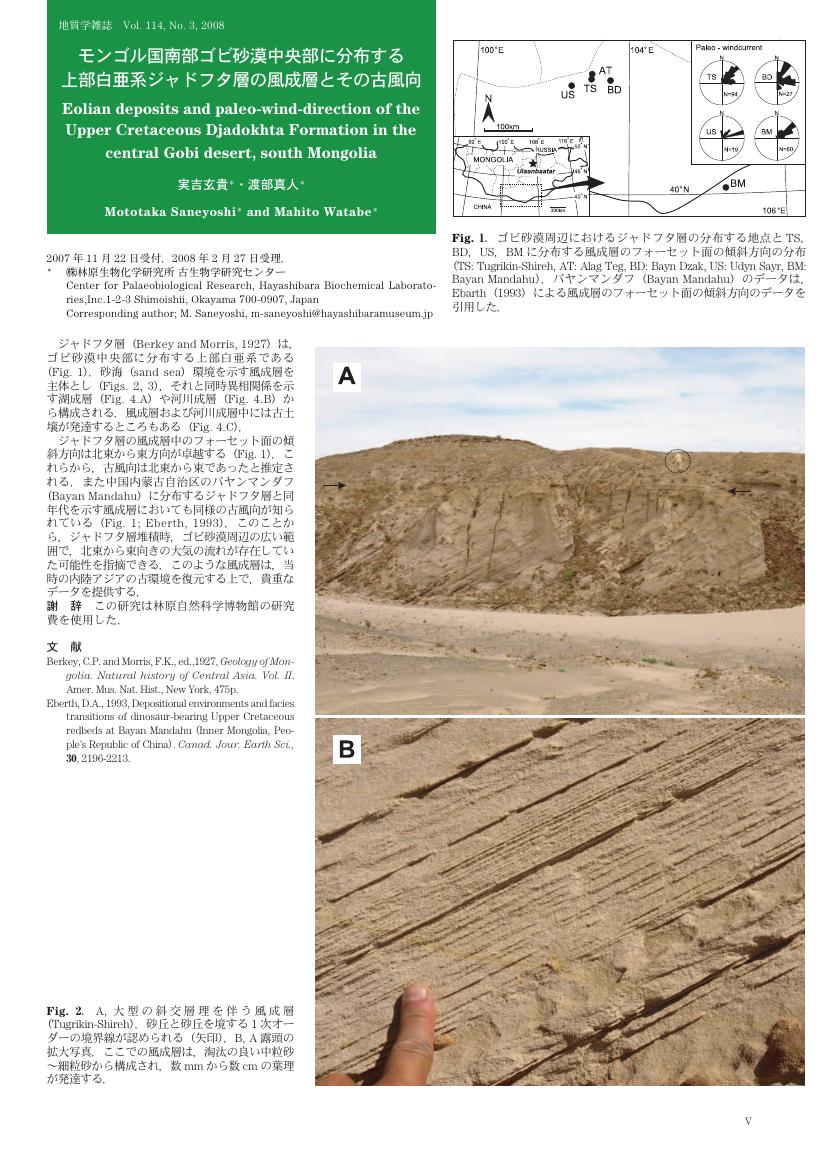7 0 0 0 OA 持ち運べる角竜類トリケラトプス頭部レプリカキット
2 0 0 0 OA モンゴル国南部ゴビ砂漠中央部に分布する上部白亜系ジャドフタ層の風成層とその古風向
- 著者
- 実吉 玄貴 渡部 真人
- 出版者
- 一般社団法人 日本地質学会
- 雑誌
- 地質学雑誌 (ISSN:00167630)
- 巻号頁・発行日
- vol.114, no.3, pp.V-VI, 2008-03-15 (Released:2013-02-23)
- 参考文献数
- 2
- 被引用文献数
- 1 1
- 著者
- 沢田 順弘 中山 勝博 実吉 玄貴
- 出版者
- 島根大学
- 雑誌
- 島根大学地球資源環境学研究報告 (ISSN:13439774)
- 巻号頁・発行日
- vol.20, pp.13-23, 2001-12-28
The Miocene strata in the Nachola area,northern Kenya have yielded many hominoid fossils which are important for the study of hominid evolution.The Joint Japan-Kenya team has conducted palaeontological excavations at Nachola since 1982 and has collected abundant fossil fauna,especially of Nacholapithecus,a hominoid of the Kenyapithecus group.13;Nacholapithecus fossils were found at 15 sites in a thin horizon in the lowest part(15 Ma)of the Middle Miocene Aka Aiteputh Formation,scattered over an outcrop area of 13 km×3 km.The fossiliferous strata are covered by thick basalt lava flows.Clastic sedimentary rocks at representative fossil sites BG-K and BG-I are volcaniclastic and have been subdivided into at least 10 units,totaling about 13 m maximum thickness.Most of the clastic sediments are characteristically poorly sorted and are matrix supported with pyroclastic matrix and pumice(less than 2 cm in diameter).13;They were mainly derived from a lahar,except for some units formed by flood or pyroclastic flow.Pyroclastic materials include volcanic glass,anorthoclase and aegirine augite derived from phonolitic trachyte.The Nacholapithecus fossils are well preserved,and many of the skeletal parts are in connection,especially at the site BG-K.13;The hominoids seem to have been buried alive,similar to the situation that occurred on November13th,1985,at Amlero town,Colombia.Excavated fossils comprise many individuals of various age groups(infants to aged adults of both sexes)which may allow us to launch a new field of study,"palaeo-primate sociology",which will throw light on the population structure of Macholapithecus groups.


